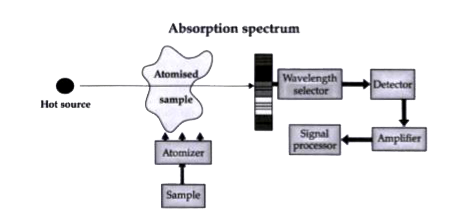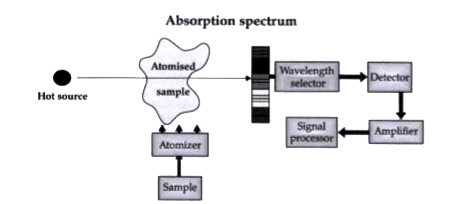A : Carotenoids protect plant from excessive heat and prevent photoxidation of chlorophyll.
R : Carotenodis enable a wider range of wavelength of incoming light to be utilised for photosynthesis.
If both Assertion % Reson ar true and the reason is the correct explanation of the asserition the mark (1)
If both Assertion % Reason are true but the reason, is not the correct explanation of the assertion ,then mark (2)
If Assetion is true statement but Reason is false , The mark (3)
If both Assertion and Reason are false statements, the mark (4)
The correct Answer is:B
Step by step video, text & image solution for A : Carotenoids protect plant from excessive heat and prevent photoxidation of chlorophyll. R : Carotenodis enable a wider range of wavelength of incoming light to be utilised for photosynthesis. by Biology experts to help you in doubts & scoring excellent marks in Class 12 exams.
Topper's Solved these Questions
- BOOK - AAKASH INSTITUTECHAPTER - PHOTOSYNTHESIS IN HIGHER PLANTS EXERCISE - Assignment(Section C)60videos
PHOTOSYNTHESIS IN HIGHER PLANTS
- BOOK - AAKASH INSTITUTECHAPTER - ORGANISMS AND POPULATIONS EXERCISE - ASSIGNMENT (SECTION-D) (Assertion-Reason Type Questions)15videos
ORGANISMS AND POPULATIONS
- BOOK - AAKASH INSTITUTECHAPTER - PLANT GROWTH AND DEVELOPMENTEXERCISE - ASSIGNMENT (SECTION -D)10videos
PLANT GROWTH AND DEVELOPMENT
Similar Questions
A pigment appears yellow-orange in the chromatogram and found in leaves of higher plants, helps
(a) In absorption of light of different wavelength
(b) To prevent oxidative destruction of chlorophyll pigment by light.
(c) By absorbing wavelengths beyond visible spectrum which increases the efficiency of photosynthesis.View SolutionRead the following statements and choose ones- (A) Carotenoids protect chlorophyll a from photooxidation, (B) Dark reactions are not directly light driven, ©Chlorophyll a molecule shows maximum absorption in red and blue regions of the visible spectrum of light, (D) Light harvesting complexes are composed of hundreds of pigment molecules bound to lipids only.
View Solution
Knowledge Check
- Question 1 - Select One
Assertion :- Presence of accessory pigments enhances rate of photosynthesis.
Reason :- They enable a wider range of wavelength of incoming light to be utilised for photosynthesis.AIf both assertion and reason are true and reason is the correct explanation of assertion.BIf both assertion and reason are true but reason is not the correct explanation of assertion.CIf assertion is true but reason is false.DIf both assertion and reason are false. - Question 2 - Select One
Assertion: Accessory pigments enable a wider range of wavelength of incoming light to be utilised for photosynthesis.
Reason: Accessory pigments also protect chlorophyll a from photo-oxidation.AIf both assertion and reason are true and the reason 1s the correct explanation of the assertion.BIf both assertion and reason are true but reason is not the correct explanation of the assertion.CIf assertion is true but reason is false.DIf both assertion and reason are false. - Question 3 - Select One
Which of the following statement is / are incorrect ?
(i) Green light falling in the range of wavelength 500 0 -580 nm is least effective for photosynthesis.
(ii) In non - cyclic photophosphorylation, the electron expelled from the reaction centre is not cycled back , though its loos is compensated by electrons from the photolysis of water .
(iii) Chl a , Chl b , carotenoids , and xanthophylls are insoluble in organic solvents.
(iv) 400-700 nm light is used in photosynthesis also known as PAR.
(v) Red light is the most effective for photosynthesis.A(iv) and (v)B(iii) and (v)C(ii) and (v)D(iv) only
Read the following statements and choose the correct ones.
A. Carotenoids protect chlorophyll a from photo-oxidation.
B. Dark reactions are not directly light driven.
C. Chlorophyll a molecule shows maximum absorption in red and blue regions of the visible spectrum of light.
D. Light harvesting complexes are composed of hundreds of pigment molecules bound to lipids onlyView SolutionIn these questions, the 1st and The last sentence of the passage are numbered 1 and 6. The rest of the passage is split into four parts and named P, Q, R and S. These four parts are not given in their proper order. Read the sentences and find out which of the four combinations is correct.
1: One of the reasons why people wear clothes is to protect their bodies.
P: In cold countries, on the other hand, people wear woollen clothes which keep the body warm.
Q : Besides cotton and wool, new fibres such as nylon and ray on are also used today for clothes.
R: In hot countries like India, people wear clothes made of cotton which are cool.
S: The body has to be protected from cold and heat.
6 : We can say, therefore, that all our clothes are made from three different materials-animal fur or skins, plant fibres and artifical fIbres.View SolutionRead the following text and answer the following questions on the basis of the same:
Atomic Absorption Spectrometer: The atomic absorption (AA) spectrometer is used to analyze metals at very low concentrations, typically in the parts per million (ppm) or parts per billion (ppb) ranges. A liquid sample containing dissolved material whose concentration is to be measured is aspirated into a thin, wide AA flame, or is introduced into a small carbon furnace which is heated to a high temperature.

Basic Principle of AAS is the measurement of absorption of radiation by free atoms. The total amount of absorption depends on the number of free atoms present and the degreee to which the free atoms absorb the radiation. At the high temperature of the AA flame, the sample is broken down into atoms using an atomizer and it is the concentration of these atoms that is measured. Sample in the form of solution is used. It is broken up into a fine mist with the help of an atomizer. When the mist reaches the flame, the intense heat breaks up the sample into its individual atoms. When a photon coming out from the hot source hits an atom and the energy of the photon is equal to the gap between two electron energy levels of the atom, then the electron in the lower energy level absorb the photon and jumps up to the higher energy level. If the photon energy does not correspond to the difference between two energy levels, then the photon will not be absorbed (it may be scattered away). Hence in the spectrum, the wavelength corresponding to the absorbed photons is observed as black lines as shown in the following spectrum of Hydrogen. The dark lines correspon to the frequencies of light those have been absorbed by the sample element. Using this process, a source of photons (generally a white light) of various energies is used to obtain the absorption spectra of different materials and to identify them.
How the sample for analysis is deriven to atomic state in AAS?View SolutionRead the following text and answer the following questions on the basis of the same:
Atomic Absorption Spectrometer: The atomic absorption (AA) spectrometer is used to analyze metals at very low concentrations, typically in the parts per million (ppm) or parts per billion (ppb) ranges. A liquid sample containing dissolved material whose concentration is to be measured is aspirated into a thin, wide AA flame, or is introduced into a small carbon furnace which is heated to a high temperature.

Basic Principle of AAS is the measurement of absorption of radiation by free atoms. The total amount of absorption depends on the number of free atoms present and the degreee to which the free atoms absorb the radiation. At the high temperature of the AA flame, the sample is broken down into atoms using an atomizer and it is the concentration of these atoms that is measured. Sample in the form of solution is used. It is broken up into a fine mist with the help of an atomizer. When the mist reaches the flame, the intense heat breaks up the sample into its individual atoms. When a photon coming out from the hot source hits an atom and the energy of the photon is equal to the gap between two electron energy levels of the atom, then the electron in the lower energy level absorb the photon and jumps up to the higher energy level. If the photon energy does not correspond to the difference between two energy levels, then the photon will not be absorbed (it may be scattered away). Hence in the spectrum, the wavelength corresponding to the absorbed photons is observed as black lines as shown in the following spectrum of Hydrogen. The dark lines correspon to the frequencies of light those have been absorbed by the sample element. Using this process, a source of photons (generally a white light) of various energies is used to obtain the absorption spectra of different materials and to identify them.
What happens when a photon hits an atom and the energy of the photon is not equal to the gap between two electron energy levels of the atom?View SolutionRead the following text and answer the following questions on the basis of the same:
Atomic Absorption Spectrometer: The atomic absorption (AA) spectrometer is used to analyze metals at very low concentrations, typically in the parts per million (ppm) or parts per billion (ppb) ranges. A liquid sample containing dissolved material whose concentration is to be measured is aspirated into a thin, wide AA flame, or is introduced into a small carbon furnace which is heated to a high temperature.

Basic Principle of AAS is the measurement of absorption of radiation by free atoms. The total amount of absorption depends on the number of free atoms present and the degreee to which the free atoms absorb the radiation. At the high temperature of the AA flame, the sample is broken down into atoms using an atomizer and it is the concentration of these atoms that is measured. Sample in the form of solution is used. It is broken up into a fine mist with the help of an atomizer. When the mist reaches the flame, the intense heat breaks up the sample into its individual atoms. When a photon coming out from the hot source hits an atom and the energy of the photon is equal to the gap between two electron energy levels of the atom, then the electron in the lower energy level absorb the photon and jumps up to the higher energy level. If the photon energy does not correspond to the difference between two energy levels, then the photon will not be absorbed (it may be scattered away). Hence in the spectrum, the wavelength corresponding to the absorbed photons is observed as black lines as shown in the following spectrum of Hydrogen. The dark lines correspon to the frequencies of light those have been absorbed by the sample element. Using this process, a source of photons (generally a white light) of various energies is used to obtain the absorption spectra of different materials and to identify them.
What should be the concentration of metal for analysis using Atomic Absorption Spectrometer?View Solution

